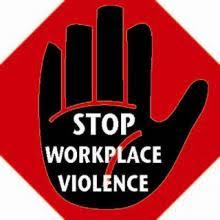A recent report by The Joint Commission has tackled the issue of workplace violence in healthcare organizations head on.
The Sentinel Event Alert 59: Physical and verbal violence against health care workers gives hospitals and healthcare organizations guidelines to address the increasing workplace violence taking place around the nation.
While healthcare workers like nurses and physicians are targets of both physical and verbal violence, they can also become pulled into a situation when a patient is being threatened. Unfortunately, this environment causes enormous upheaval in a place where people are being helped and where those professionals are expecting a safe workplace.
According to the alert, these seven guidelines will help staff report instances of violence and will help create standards for recognizing potential situations, reporting them, preventing future instances, and reacting in an emergency situation.
- Recognizing that data come from several sources, capture, track and trend all reports of workplace violence—including verbal abuse and attempted assaults when no harm occurred, but in which the health care worker feels unsafe.
- Provide appropriate follow-up and support to victims, witnesses and others affected by workplace violence, including psychological counseling and trauma-informed care if necessary.
- Review each case of workplace violence to determine contributing factors. Analyze data related to workplace violence, and worksite conditions, to determine priority situations for interventions.
- Develop quality improvement initiatives to reduce incidents of workplace violence.
- Train all staff, including security, in de-escalation, self-defense and response to emergency codes.
- Evaluate workplace violence reduction initiatives. The Joint Commission
The Commission’s infographic on workplace violence clearly defines what constitutes violence including instances of biting, scratching, intimidating, or yelling. While some nurses encounter these things infrequently, others, like ED nurses where crowding is more common, tensions are high, and some patients might be agitated, will encounter it more often. Either way, reporting such instances will help organizations get a realistic picture of what is happening with patients and staff and make a plan to help fix it.
Nurses who do encounter workplace violence should receive immediate treatment for the physical injuries, but they also will need treatment for the emotional distress. Workplace violence can lead to stress, anxiety, depression, fear, and burnout and impact a person’s quality of life as well as the ability to offer the best patient care possible. The repercussions can’t be underestimated, so nurses shouldn’t brush it off or try to minimize it.
Each healthcare organization needs to address this issue and have plans in place for preventing, reporting, and responding to workplace violence. Failing to do so is failing to protect employees and patients from getting the treatment they need in a safe environment.
- WOC Nurses Week Highlights Specialty - April 16, 2024
- Honoring Radiology Nurses Day on April 12 - April 12, 2024
- Travel Offers New Career Possibilities - April 8, 2024



